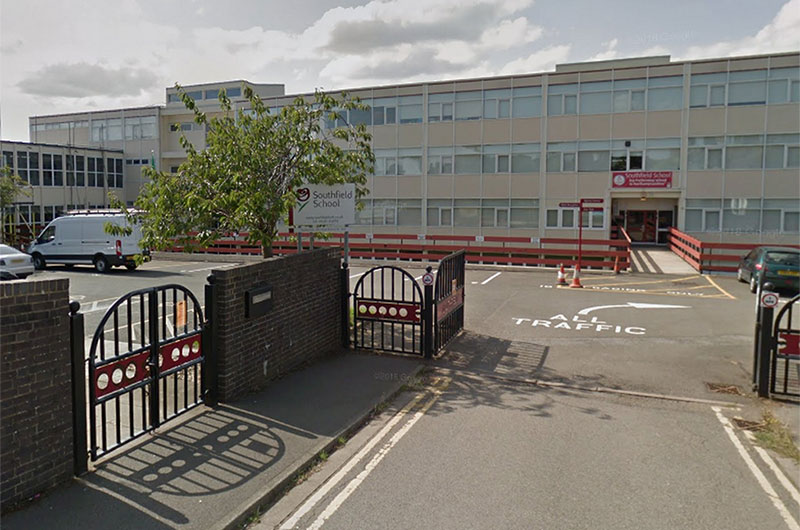Asbestos in School CLASP Buildings: What You Need to Know
After World War II, Britain was faced with a country that had undergone bombings and desperately needed to be rebuilt. With the economy drained and funding difficult to come by, the population was also growing.
It was of critical importance that public sector buildings be available. In particular, hospitals and schools were a top priority. Plus, the most had to be made of what little resources were available. In response, the Consortium of Local Authorities Special Programme (CLASP) was formed.

What are CLASP buildings?
CLASP buildings were low-cost, standardized constructions. Light gauge steel was used to create prefabricated modular frames of up to 4 storeys.
CLASP buildings were first designed for hospitals and schools. It wasn’t long before it became a construction style for housing and offices, too. CLASP constructions were easy to build and had a simple design. They could be replicated fast as well.
During the 1950s and 1960s, several CLASP buildings went up in various counties in England. CLASP continued to operate until the 1980s. Systems similar to CLASP started appearing as well under different names. SCOLA is one example. The idea was the same as CLASP: to construct uniform buildings as efficiently as possible.
CLASP buildings are coming to the end of their lifespan
CLASP buildings have a design life of only about 60 years. That means that most of them are well past their period of intended use. However, many of them continue to be in use today.
The risk of asbestos exposure in CLASP buildings is something to be taken seriously. Asbestos was extensively used when constructing CLASP buildings. Additionally, since the buildings may no longer be in good condition, the asbestos-containing materials may be damaged as well.
Damaged asbestos releases dangerous fibres into the air, which can then be inhaled.
Why was asbestos used in CLASP buildings?
CLASP and other types of buildings constructed between 1950 and 1985 commonly used asbestos-containing materials. Asbestos was once used for functions like fireproofing and heat insulation. It’s often found in ceiling tiles, floor coverings, and wall panels.
The steel frames used in CLASP buildings were an essential part of the design because they were inexpensive and easy to work with. But steel frames have to be fireproofed. The least expensive way to do that was with asbestos products.
Asbestos insulating board (AIB) was often used in CLASP buildings for this purpose. Some AIBs can contain up to 40% asbestos. Since they break down easily, the risk of them releasing asbestos fibres is high.
Moreover, building architects may have used asbestos-containing materials but didn’t record their whereabouts. That means that there could be asbestos in a CLASP building that goes undetected.
What are the dangers of asbestos presence in CLASP buildings?
Asbestos doesn’t pose a major health risk if it’s undisturbed. The problem occurs when the asbestos-containing materials crumble, though. In this case, the asbestos can become dust or powder. When a person inhales asbestos fibres, there’s the possibility of major health problems resulting years down the road.
Asbestos fibres tend to get lodged in the lining of the lungs. Once there, they can cause life-threatening health conditions 10 or more years in the future. For example, asbestosis occurs when there’s scarring of the lungs, and mesothelioma, caused by asbestos exposure, is a rare cancer with a grim outlook.
It’s necessary to know where asbestos is present in a CLASP building
Asbestos must either remain undisturbed or be removed if it poses a risk. For this to happen, the duty holder of the building needs to know where it exists and what condition it’s in. When it comes to CLASP buildings, a major asbestos-related danger is that it’s not always clear where asbestos may be found.
After World War II, material shortages were common. Workers had to find a way to make up for what they didn’t have. Sometimes, asbestos-containing materials were used in unexpected areas like ceiling voids or columns. In that case, if there’s damage to the column casings, for example, asbestos fibres can be released.
It’s best to assume that if there’s a concealed area in a CLASP building, there’s a possibility that asbestos is there.
Asbestos in columns and insulating board
Columns containing asbestos materials usually had metal casings to enclose them. However, asbestos fibres are still able to escape the casings in some circumstances. Even something as simple as slamming a nearby door may be enough to vibrate the casings and release harmful asbestos fibres.
Another major asbestos-related concern when it comes to CLASP buildings is the use of asbestos insulating board. This type of board was used in various parts of CLASP buildings. Unfortunately, it crumbles easily. That means it has a high potential to release dangerous asbestos fibres.
What does the duty holder in a CLASP-constructed school need to do?
The duty holder of a building is the person responsible for the maintenance and repair of that building. Part of that is the responsibility to properly manage asbestos materials in their CLASP building.
When it comes to schools, the duty holder may be the employer. Depending on the type of school, that may be the local authority instead of someone who has a job in the school itself.
Duty holders are expected to do the following:
- Identify if asbestos is present. When it comes to CLASP buildings, it’s safe to assume there is some asbestos present.
- Assess the condition of the asbestos.
- Record information about the condition of the asbestos.
- Manage risk so that people in the building are not exposed to asbestos fibres.
- Let anyone who may be affected know about the presence, location, and condition of asbestos in the school building.
Furthermore, duty holders should consider CLASP buildings to be a priority if they’re responsible for more than one building.
Duty holders can carry out visual inspections to determine if asbestos is present and whether or not it’s damaged. However, a trained specialist will know exactly where to look for asbestos and how to stay safe during the inspection.
What to do if you’re concerned about asbestos in a CLASP building
If you’re worried that there may be asbestos in a CLASP building or if you’re sure asbestos is present, contact a professional. Asbestos surveyors and removal experts will be able to find, remove or secure asbestos-containing materials. Even CLASP buildings that contain asbestos can be made safe for occupants, workers, and visitors.
In summary
CLASP buildings were designed to solve a problem. Unfortunately, the use of asbestos-containing materials in CLASP buildings created another problem. And since many CLASP buildings are still in use, that problem persists today.
At the time of construction, the risks of asbestos weren’t yet known. That means that not only was asbestos used frequently, but it wasn’t cared for properly. It was common for asbestos materials to not be sealed, for example.
Everyone from teachers and students to maintenance workers and visitors should have the lowest amount of risk possible of exposure to asbestos fibres. It’s the duty holder’s responsibility to keep everyone in the building safe from asbestos.
Contact us today for information about ensuring your CLASP building doesn’t have unsafe asbestos conditions.

Written by Jess Scott
Jess Scott has been an all-round asbestos consultant since 1996. That’s nearly 3 decades of asbestos knowledge. He spends his time sharing that knowledge with the team at Oracle and with their clients. Jess's goal is, and always has been, to use my expertise in helping people to comply with the law. This legal compliance ultimately helps to protect everyone from the harmful effects of asbestos. Jess has acted as an asbestos expert witness in legal cases and is involved in many asbestos educational activities throughout the UK.
